For several days early last month I was able to photograph this juvenile Red-tailed Hawk (and occasionally its apparent sibling) while it was “sit and wait” hunting for voles from elevated rocks on Antelope Island. The first six images I’ve presented here were all taken on the same morning.
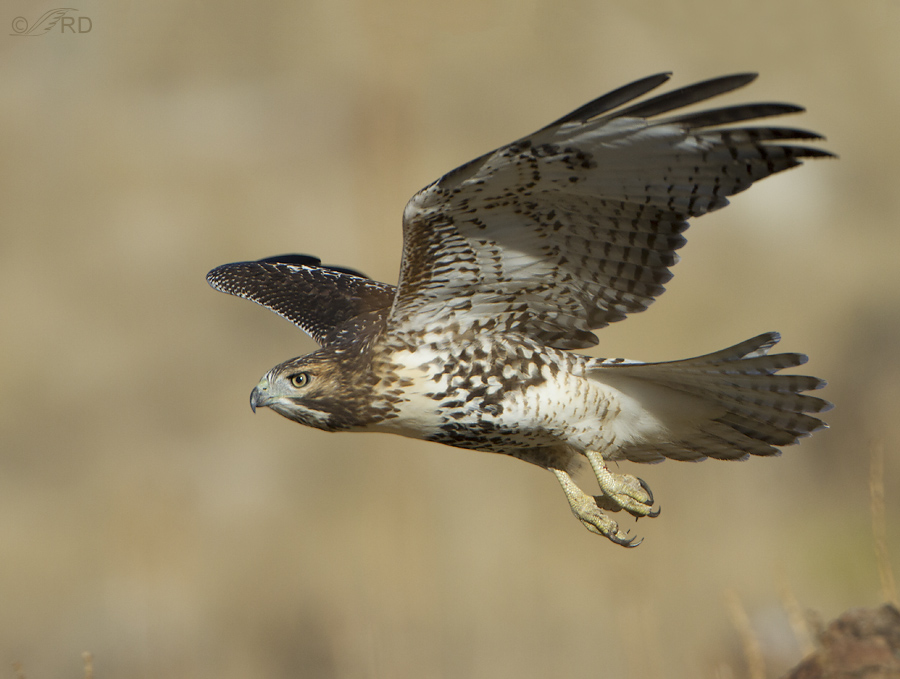
1/2000, f/7.1, ISO 400, 500 f/4, 1.4 tc, natural light, not baited, set up or called in
Many of these shots were taken during or just after take-off and you’ll notice that the bird was flying to my left in all six images taken that morning. That’s due to the “lay of the land” and the fact that the rocks this bird was hunting from were angled on the side of the mountain in such a way that the hawk was always hunting an area to my left. This is one of the few times the bird took off when it wasn’t after prey.
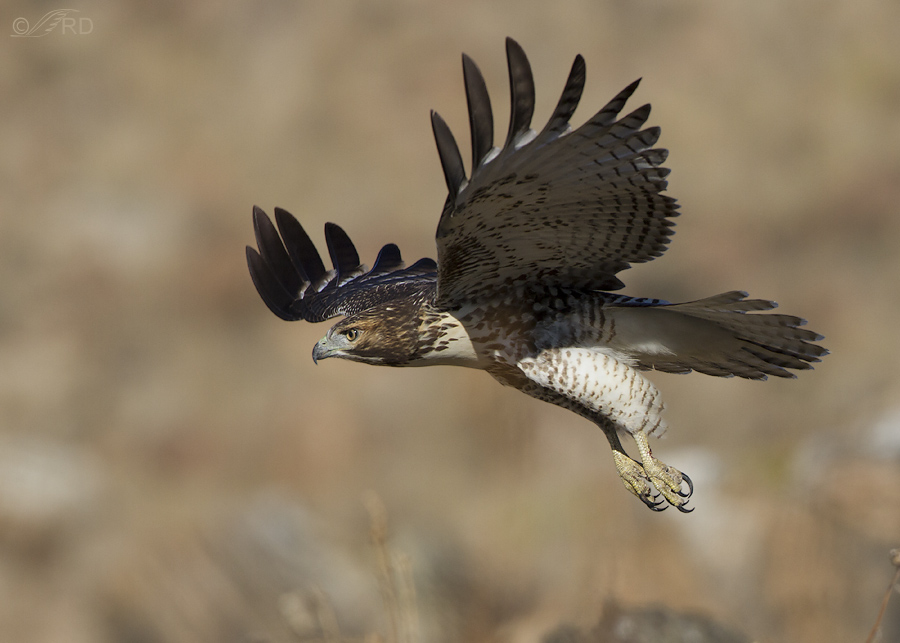
1/3200, f/6.3, ISO 400, 500 f/4, natural light, not baited, set up or called in
When the hawk had spotted prey before it took off it never took its eyes off the quarry as it was going in, so I normally wouldn’t get direct eye contact. This bird was very close when it took off – you’ll notice from my techs that I’d removed my tc and the hawk was still quite large in the frame.
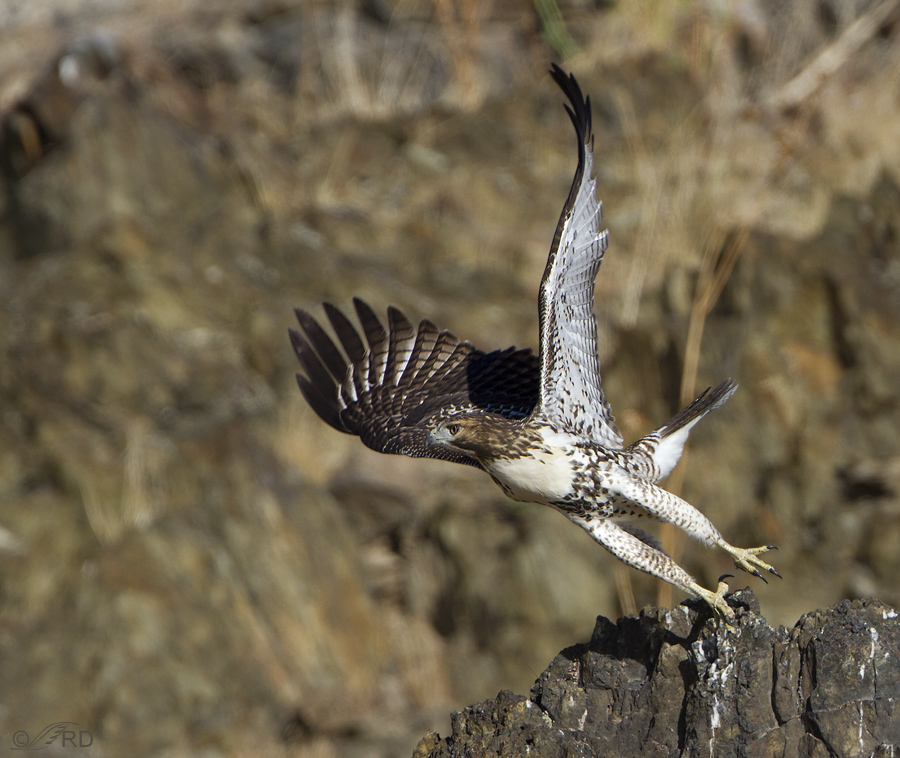
1/2000, f/6.3, ISO 500, 500 f/4, 1.4 tc, natural light, not baited, set up or called in
It was somewhat problematic when there were rocks directly behind the perch because the bird wasn’t well separated from the dark background when it took off. I liked this shot anyway because of the dynamic take-off posture.
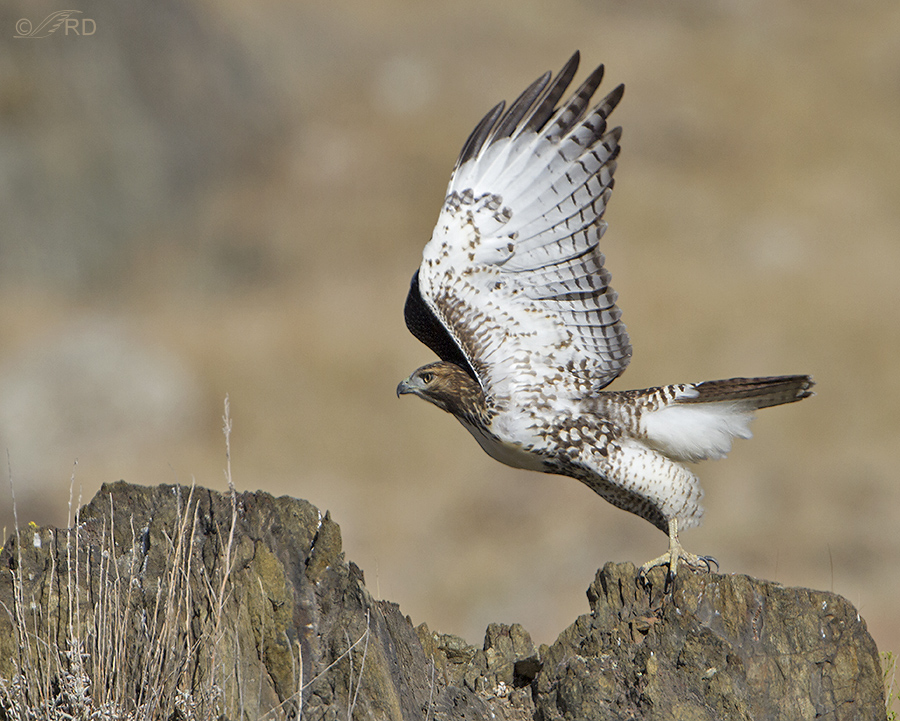
1/2500, f/7.1, ISO 500, 500 f/4, 1.4 tc, natural light, not baited, set up or called in
I enjoy these dark rocks as perches. I think they’re aesthetically pleasing and…

1/2500, f/7.1, ISO 500, 500 f/4, 1.4 tc, natural light, not baited, set up or called in
when they’re well isolated from the background it makes it easier to keep focus-lock on the hawk after it takes off. This shot was taken two clicks after the previous image, during the same take-off.
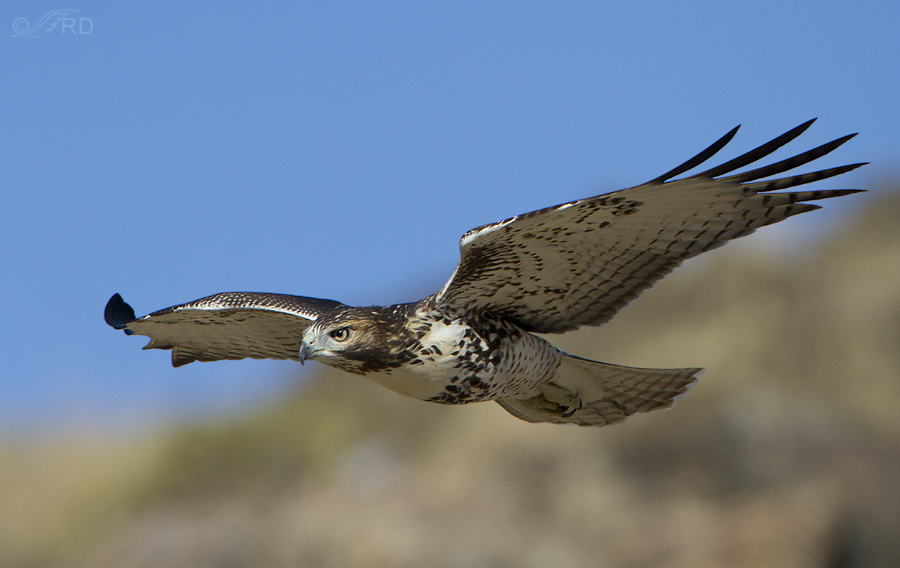
1/2500, f/7.1, ISO 500, 500 f/4, 1.4 tc, natural light, not baited, set up or called in
As you can tell from the position of the feet, this bird is in full flight, rather than soon after take-off.
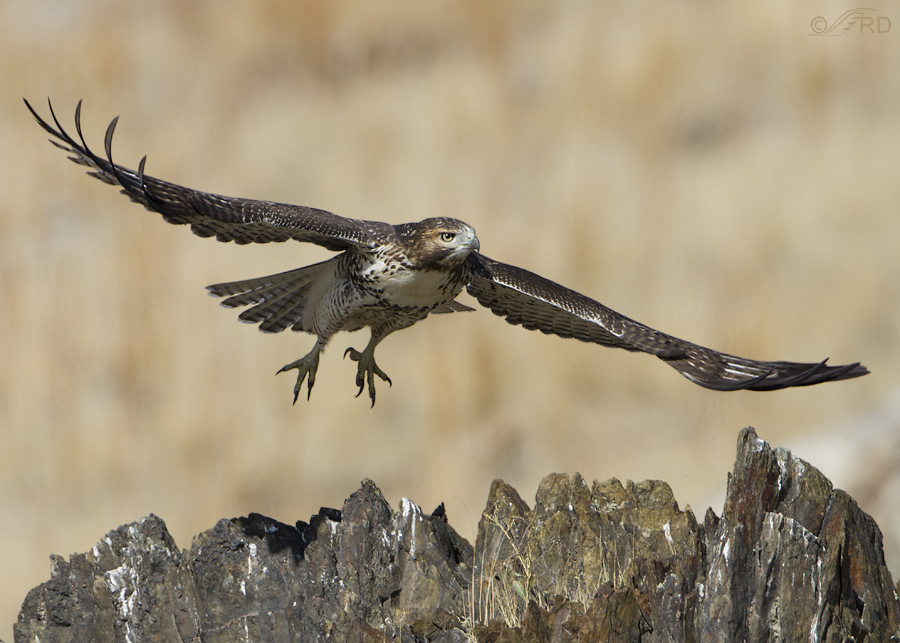
1/3200, f/7.1, ISO 500, 500 f/4, 1.4 tc, natural light, not baited, set up or called in
The next morning I was lucky enough to find what I believe to be the same hawk hunting in the same general area. But this time it occasionally took off to my right. Sometimes the perch would still be in the image..
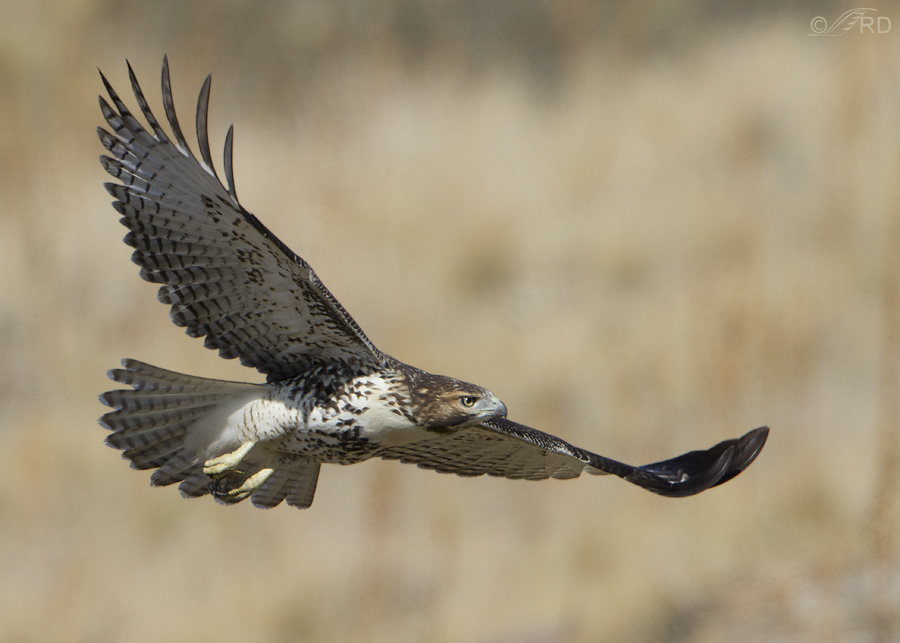
1/3200, f/7.1, ISO 500, 500 f/4, 1.4 tc, natural light, not baited, set up or called in
but other times I was able to keep focus locked onto the bird long enough to get a clean background. I like both types of shots.
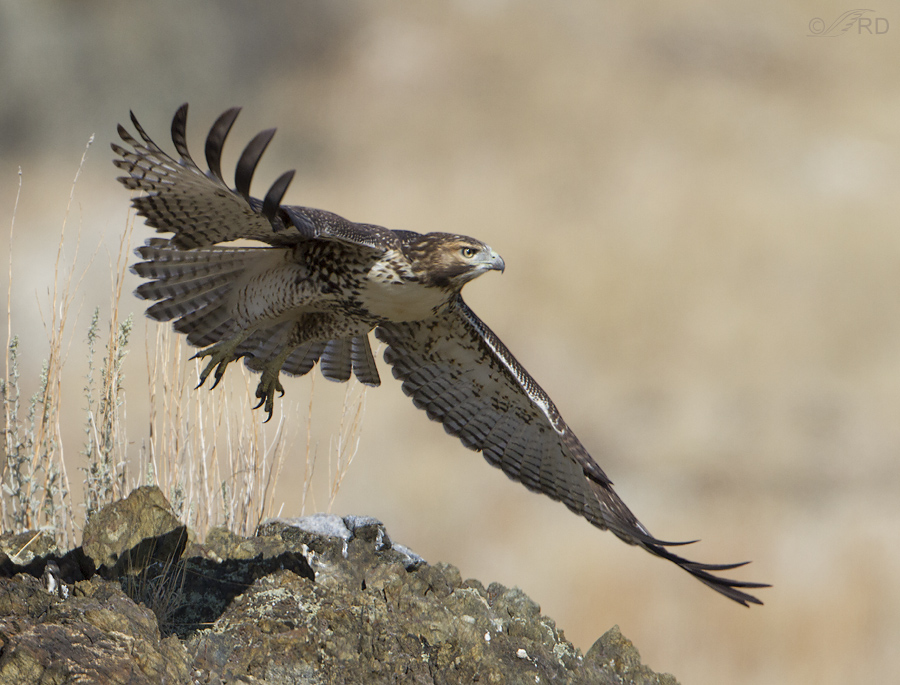
1/2000, f/7.1, ISO 500, 500 f/4, 1.4 tc, natural light, not baited, set up or called in
Habitat can be a little messy at times but here I don’t think the spikey plants in the background are an issue because they’re behind the bird and I enjoy the natural context they add to the image.
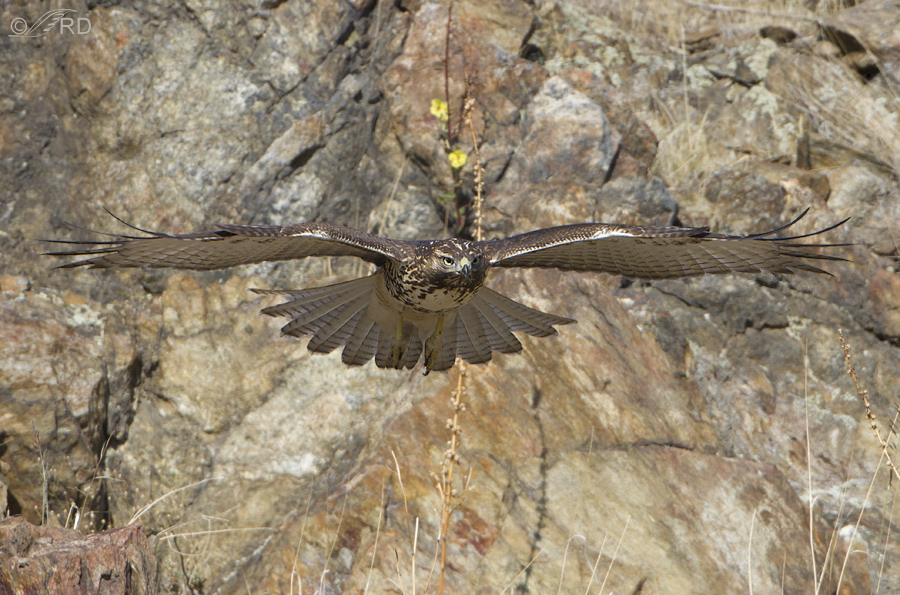
1/2000, f/8, ISO 500, 500 f/4, 1.4 tc, natural light, not baited, set up or called in
I thought I’d include this photo to illustrate one of the problems of shooting flight shots among these rocks. When the rocks are very close to the bird in the background it can be problematic for two reasons: 1). it becomes challenging to keep focused on the bird because autofocus wants to lock on to the background (especially when it’s a head-on flight shot like this one) and 2). the dark, relatively sharp (in focus) rocks make it difficult for the dark hawk to stand out against the background. But I still think it’s an interesting image.
This bird and its sibling are still hanging around but their hunting area has become much more dispersed and as they mature they seem to be significantly more skittish and difficult to approach. So I’m happy to have had my “up close and personal” time with these hawks when I did, because I’ve had very little luck with them since.
Ron


Fantastic photos. Thanks for all the tie-bits of information included with them! I’m really glad you included that last shot….it is intriguing!
Teri, Interesting that you and Mike both apparently liked that last image. So did I, but I figured I’d be the Lone Ranger on that one…
Exquisite! Thanks so much for sharing these with us.
Thank you, Sharon.
They’re all such captivating images Ron! Despite the visual distraction of the vertical seed pods and yellow flowers, I really like the last one. The bird’s coloring and horizontal line blends beautifully with the multi-hued and fractured rock.
Hey Mike, Dang, now I wish I’d posted one of the other shots I have like that last image, but sans the seed pods and flowers. I was actually able to get several sharp shots of this bird in a row as it came toward me, despite the close background. Live and learn…
Great shots! I love seeing a bird from multiple angles. These photos give you the same insight you might get if you had the bird in hand, which to me is absolutely valuable and fascinating. Thanks again Ron.
You always seem to have some interesting observations when you comment, Bryce. Thanks for that.
Terrific images! Unless you’re going for a strictly “artistic” look of only the subject, the backgrounds enhance the photos, in my opinion. It gives one a real sense of place to see the hawk’s environment. Yes, it presents technical challenges, but that’s why you get the BIG BUCKS! Seriously, I love your work and am learning a great deal which I hope to have a chance to use soon and often! -Wally
Seriously, I love your work and am learning a great deal which I hope to have a chance to use soon and often! -Wally
Thanks very much, Wally. And I agree and prefer habitat in my images, all else being equal. The only “big bucks” I ever see have antlers…
Ron, your photos leave me speechless! Stunning captures!
Thanks a lot, Chuck.
These are your best shots with very good angles . much like jet planes etc. Inspires me to make paintings of them combining three or more in formation flight . Now my work begins ..
Thanks Eldridge. Good luck with your project.